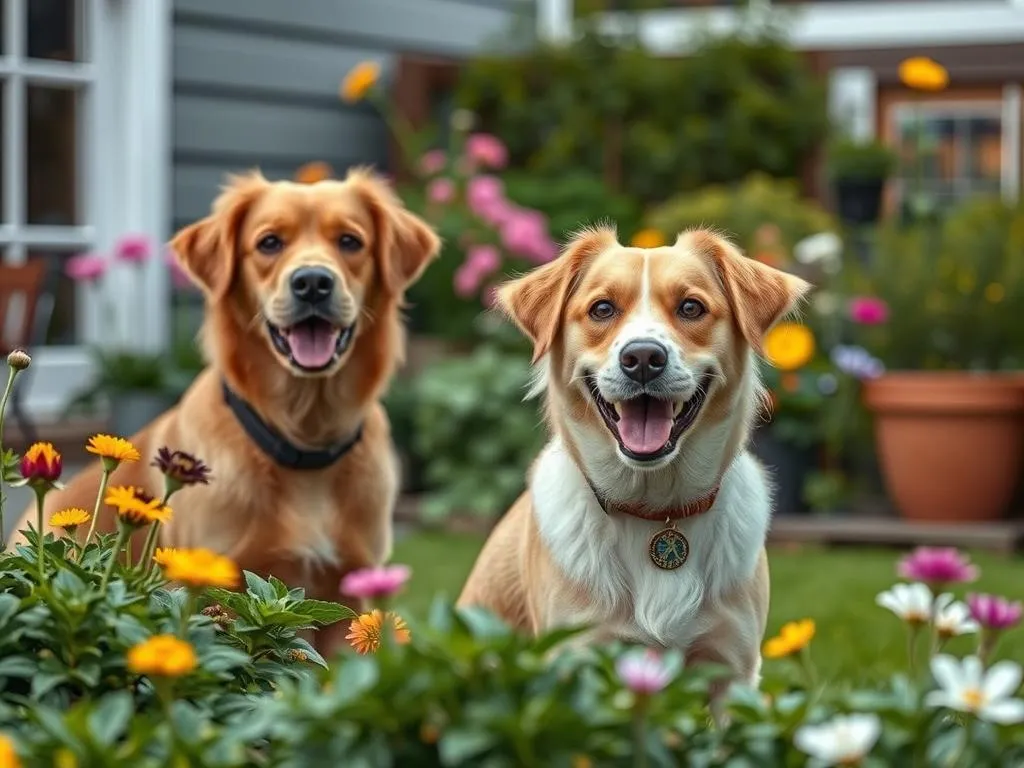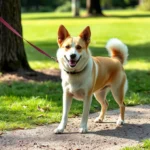
Introduction
Gardening has emerged as one of the most cherished pastimes, with a significant rise in pet owners wanting to share this experience with their beloved furry friends. According to a recent survey, nearly 60% of dog owners incorporate their pets into outdoor activities, with gardening with dogs being a prominent choice. This trend highlights not just the love for gardening but also the desire to bond with pets while enjoying the great outdoors.
Including dogs in gardening activities can be immensely beneficial for both pets and their owners. Dogs thrive in interactive environments, and participating in gardening offers them mental stimulation while strengthening the bond they share with their human companions. In this article, we will delve into the benefits of gardening with dogs, how to prepare your garden for a pet-friendly experience, effective training techniques, enjoyable activities you can do together, and essential safety measures to ensure a smooth experience in the garden.
Benefits of Gardening with Dogs
Physical Health Benefits
Engaging in gardening with dogs is not just an enjoyable activity; it’s also a great workout. This shared experience promotes physical health as both the owner and the dog can engage in various forms of exercise. Digging, planting, weeding, and even simply walking around the garden can burn calories and improve cardiovascular health. Moreover, regular outdoor activity can aid in weight management for both dogs and their owners, contributing to a healthier lifestyle.
Mental Health Benefits
Gardening itself is known to alleviate stress and anxiety, and when combined with the company of a dog, the experience becomes even more enriching. The act of tending to plants, coupled with the joyful antics of a pet, can significantly enhance mood. Dogs provide companionship and comfort, making gardening a therapeutic activity that allows owners to unwind and connect with nature while fostering a deeper bond with their canine companions.
Social Benefits
Involvement in gardening can also catalyze social interactions. Many dog owners find community through gardening clubs or local events. Sharing tips, experiences, and even plants with fellow enthusiasts can lead to lasting friendships. Engaging in gardening with dogs can create opportunities for socialization, whether it’s at a community garden, a dog park, or even just your backyard.
Preparing Your Garden for Dogs
Assessing Your Garden Space
Before diving into gardening with dogs, it’s essential to assess your garden space. Evaluate the layout and size of your garden to determine the best areas for both gardening and dog play. Identify which sections of your garden are dog-friendly and consider any potential hazards, such as sharp tools, toxic plants, or fragile flowers that could be easily damaged.
Choosing Dog-Friendly Plants
Selecting the right plants is crucial in creating a safe environment. Opt for non-toxic plants and flowers that are safe for dogs. Some popular dog-friendly plants include:
- Marigolds
- Sunflowers
- Zinnias
- Basil
- Cilantro
Additionally, it’s vital to be aware of plants that are toxic to dogs. Avoid common culprits like azaleas, lilies, and oleander, which can be harmful if ingested. Educating yourself on safe flora ensures a harmonious gardening experience for you and your pet.
Creating Safe Zones
Designating specific areas in your garden for your dog to play is an effective way to minimize the risk of damage to your plants. Consider using fences, barriers, or even natural boundaries like mulch to create distinct zones. This setup allows your dog to enjoy the garden without causing chaos among your flowers and vegetables.
Training Your Dog for the Garden
Basic Commands
Training your dog in basic commands is essential for a successful gardening experience. Commands such as “sit,” “stay,” and “leave it” can help maintain order while you work in the garden. Reinforce these commands in the garden environment to ensure that your dog understands their importance, especially when plants are involved.
Desensitization to Garden Activities
Gardening tools, such as shovels and watering cans, can be intimidating for some dogs. Gradually introducing your pet to these items and the sounds they make will help desensitize them to the gardening environment. Use positive reinforcement strategies, such as treats or praise, to encourage calm behavior when these tools are around.
Managing Digging and Plant Damage
Dogs have a natural instinct to dig, which can pose a challenge in the garden. To manage this behavior, consider creating designated digging areas where your dog is allowed to dig freely. You can also redirect their digging instinct by engaging them in other activities, such as playing fetch or hide-and-seek with toys.
Gardening Activities to Enjoy with Your Dog
Companion Planting
One of the joys of gardening with dogs is the opportunity for companion planting. Involve your dog in the planting process by allowing them to help (or, more likely, watch!) as you plant flowers and vegetables. Simple tasks like holding a garden tool or digging holes can be a fun way to engage your pet and create lasting memories.
Exploring Garden Maintenance
As you tend to your garden, involve your dog in maintenance tasks such as watering and weeding. Make it a routine that both of you can enjoy together. Dogs often love to be part of the action, and incorporating them into your gardening chores can strengthen your bond while ensuring they remain active.
Outdoor Playtime
Incorporating playtime into your gardening routine can create a balanced experience for both you and your dog. Utilize your garden space for games like fetch or set up an agility course using garden features like benches or flower beds. This not only provides physical exercise for your dog but also keeps them engaged while you work.
Safety Tips for Gardening with Dogs
Protecting Your Dog from Garden Hazards
Safety should always be a priority when engaging in gardening with dogs. Be aware of common garden dangers, such as pesticides, sharp tools, and toxic plants. Ensure that any chemicals used in your garden are pet-safe, and store tools out of your dog’s reach to prevent accidents.
Hydration and Rest
Gardening can be a strenuous activity, especially during warmer months. Make sure your dog has access to fresh water and a shaded area to rest. Monitor your dog for signs of overheating or fatigue, such as excessive panting or lethargy. Taking regular breaks to hydrate and cool down will help keep your pet safe and happy.
Emergency Preparedness
Accidents can happen, even in the most prepared environments. Familiarize yourself with basic first-aid tips for common dog injuries, such as cuts or insect bites. Having a plan in place for emergencies while gardening will ensure that you can respond quickly if your pet needs assistance.
Case Studies and Personal Stories
Success Stories from Dog Owners
Many dog owners have shared their heartwarming experiences of gardening with dogs. For instance, one pet owner recounted how their dog, a lively Labrador, became a dedicated helper in the garden. The dog would eagerly dig up weeds, often unearthing hidden treasures, like long-lost toys. Such stories highlight the joy and laughter that can come from including your dog in gardening activities.
Expert Opinions
Experts in both gardening and pet care advocate for the benefits of including dogs in gardening. Veterinarians often emphasize the mental and physical stimulation that gardens provide for dogs, while gardening experts suggest that the companionship of a pet can enhance the overall gardening experience. Their insights reinforce the importance of finding ways to integrate dogs into our outdoor activities.
Conclusion
In summary, gardening with dogs offers a multitude of benefits, from physical health improvements to enhanced mental well-being and social interactions. Preparing your garden thoughtfully, training your dog effectively, and engaging in enjoyable activities together can create a beautiful and fulfilling experience.
Encouraging pet owners to include their dogs in gardening activities not only strengthens the bond between them but also enriches the gardening experience itself. So grab your gardening gloves, leash up your furry friend, and step into the garden together!









